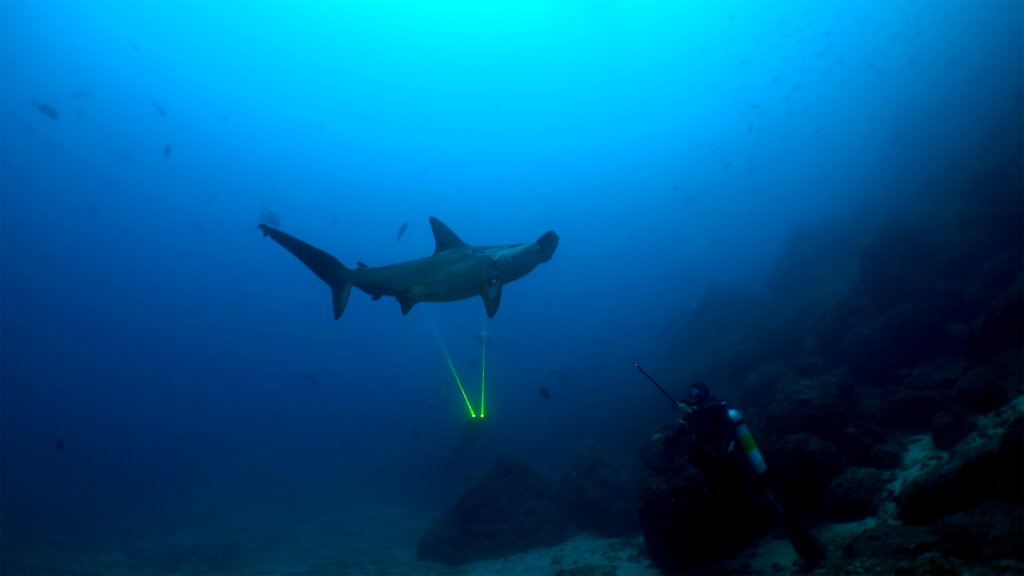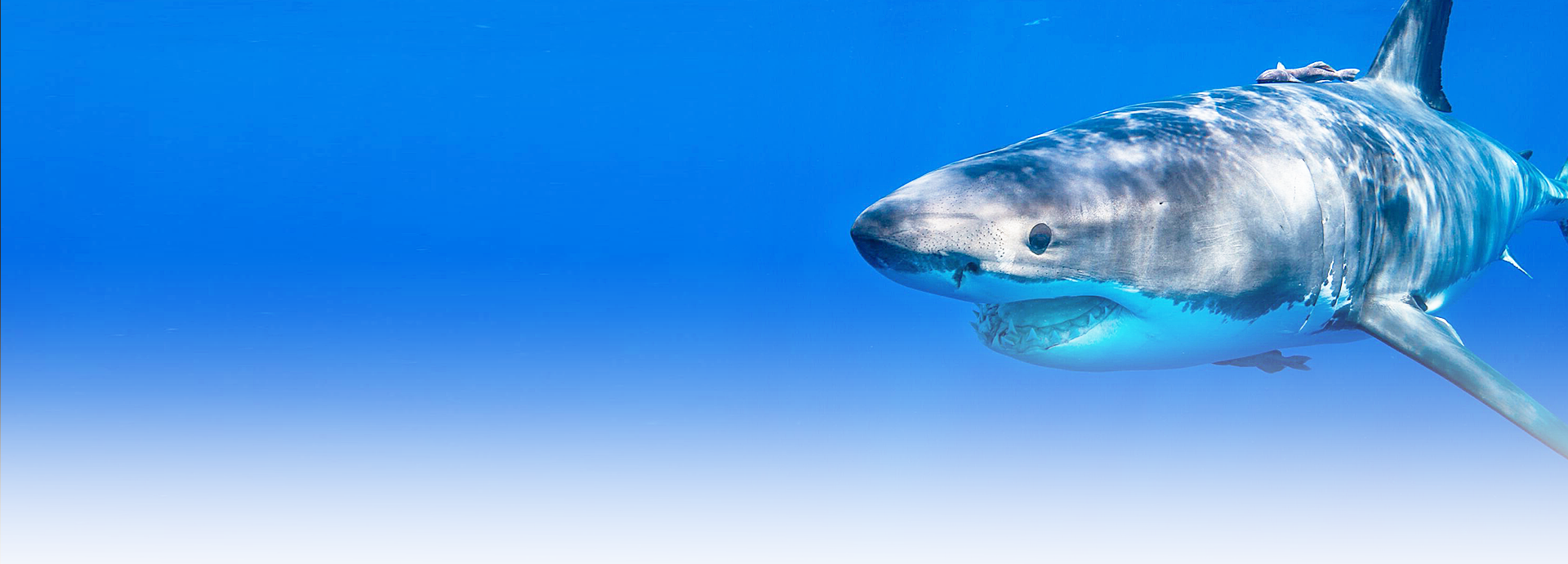Research

Research on sharks has been slow and inconsistent. There are two main reasons; one is the remoteness and inherent dangers and difficulties of studying sharks in their natural habitat, and two, the lack of funding. However, we are beginning to understand sharks and their behavior, where sharks go and why they go there. For example, satellite tagging of whale sharks has demonstrated that this species can be highly migratory traveling across ocean basins. Knowing that a species is highly migratory means it more susceptible to fisheries in areas where it is not protected. Acoustic tags have also been used to study sharks in a particular area to determine their residency status. Acoustic tags are attached to the sharks and receivers are placed on the sea floor so that when a shark with an acoustic tag gets close, the receiver stores the data transmitted by the tag.
It is important to not only understand shark migratory patterns, but to also identify nursery areas where sharks go to give birth. Marine protected areas (MPAs) must be established to protect these nursery areas so that the young sharks have a chance of surviving to adulthood.
Both satellite and acoustic tags can be equipped to record depth, temperature and location information. This kind of science requires a tremendous amount of money, and this money is usually not available unless the end results could lead to useful applications and profits. Research into sharks for their own sake is more difficult to fund. However, this is essential for their survival. The scientific data is needed to back-up any conservation argument.
From Research to Conservation

Since our inception, Fins Attached has been focused on research. The reason is quite simple. The research and the data collected is what drives the conservation agenda. The data needs to be presented to government authorities and agencies as essential information to affect international conservation policies. International cooperation is critical to our mission of preventing the extinction of sharks.
Fins Attached co-authored publications:
- 2025: Trophic ecology of juvenile smooth hammerhead shark Sphyrna zygaena (Carcharhiniformes: Sphyrnidae) in the central Gulf of California, Mexico
- 2024: Insular and mainland interconnectivity in the movements of oceanic manta rays off Mexico
- 2024: Trophic ecology of juvenile smooth hammerhead shark Sphyrna zygaena (Carcharhiniformes: Sphyrnidae) in the central Gulf of California, Mexico
- 2024: Can biochemical tracers reveal ontogenetic trophic shift and individual prey selection in white sharks from Guadalupe Island, Northeast Pacific?
- 2024: First record of a white shark (Carcharodon carcharias) in Ecuadorian waters coinciding with the 2021 La Niña ENSO event
- 2024: Vulnerability of Eastern Tropical Pacific chondrichthyan fish to climate change occurrence
- 2024: Ecological and biochemical considerations based on stable isotope analysis of blood: A case study from two juvenile lamnid sharks
- 2024: Seasonal occurrence and individual variability of bull sharks, Carcharhinus leucas, in a marine reserve of the southwestern Gulf of California
- 2023: Do marine protected areas influence mercury exposure? Insights from a shark community in the tropical Northeast Pacific
- 2023: A review of tonic immobility as an adaptive behavior in sharks
- 2023: The successful use of a submersible ultrasound to confirm pregnancy on free swimming bull sharks, Carcharhinus leucas, in a provisioned shark site
- 2023: Stress Biomarkers in the Giant Manta Mobula birostris Associated to Tourism in the Revillagigedo National Park
- 2023: Connectivity between white shark populations off Central California, USA and Guadalupe Island, Mexico
- 2022: First description of a sex segregated aggregation of silky sharks (Carcharhinus falciformis) and the frequency and distribution of mating wounds off the tip of the Baja California Peninsula
- 2022: Regional philopatry of scalloped hammerhead sharks (Sphyrna lewini) to nursery areas in the Mexican Pacific
- 2022: Research priorities for the conservation of chondrichthyans in Latin America. Biological Conservation
- 2022: Social dynamics and individual hunting tactics of white sharks revealed by biologging
- 2022: Movement patterns and residency of bull sharks, Carcharhinus leucas, in a marine protected area of the Gulf of California
- 2022: Evidence for spatial and temporal resource partitioning of sharks at Roca Partida, an isolated pinnacle in the eastern Pacific
- 2022: Studies of the movement ecology of sharks justify the existence and expansion of marine protected areas in the Eastern Pacific Ocean
- 2022: Foraging plasticity diversifies mercury exposure sources and bioaccumulation patterns in the world’s largest predatory fish
- 2021: Presence of Guadalupe fur seals (Arctocephalus philippii townsendi) at Isla Roca Partida, Revillagigedo Archipelago, México
- 2021: Seasonal aggregations of blacktip sharks Carcharhinus limbatus at a marine protected area in the Gulf of California, assessed by unoccupied aerial vehicle surveys
- 2021: An exploration of the population characteristics and behaviours of the white shark in Guadalupe Island, Mexico (2014–2019): Observational data from cage diving vessels. Aquatic Conservation
- 2021: Diving deeper into the underlying white shark behaviors at Guadalupe Island, Mexico
- 2021: The elasmobranchs of Malpelo Flora and Fauna Sanctuary
- 2021: Empowering fishers for Great White Shark stewardship: Reply to Madigan et al. Conservation Letters
- 2021: How much is too much? A carrying capacity study of white shark cage diving in Guadalupe Island, Mexico
- 2021: Reply to: Shark mortality cannot be assessed by fishery overlap alone
- 2021: Reply to: Caution over the use of ecological big data for conservation.https://doi.org/10.1038/s41586-021-03464-9
- 2021: Contamination knows no borders: Toxic organic compounds pollute plastics in the biodiversity hotspot of Revillagigedo Archipelago National Park, Mexico, Marine
- 2021: Description of first nursery area for a pygmy devil ray species (Mobula munkiana) in the Gulf of California, Mexico

